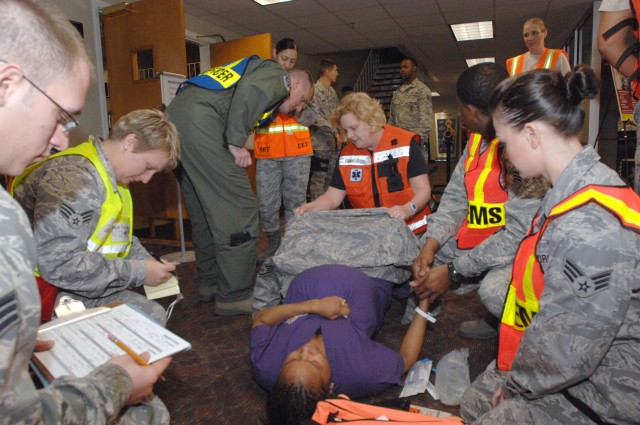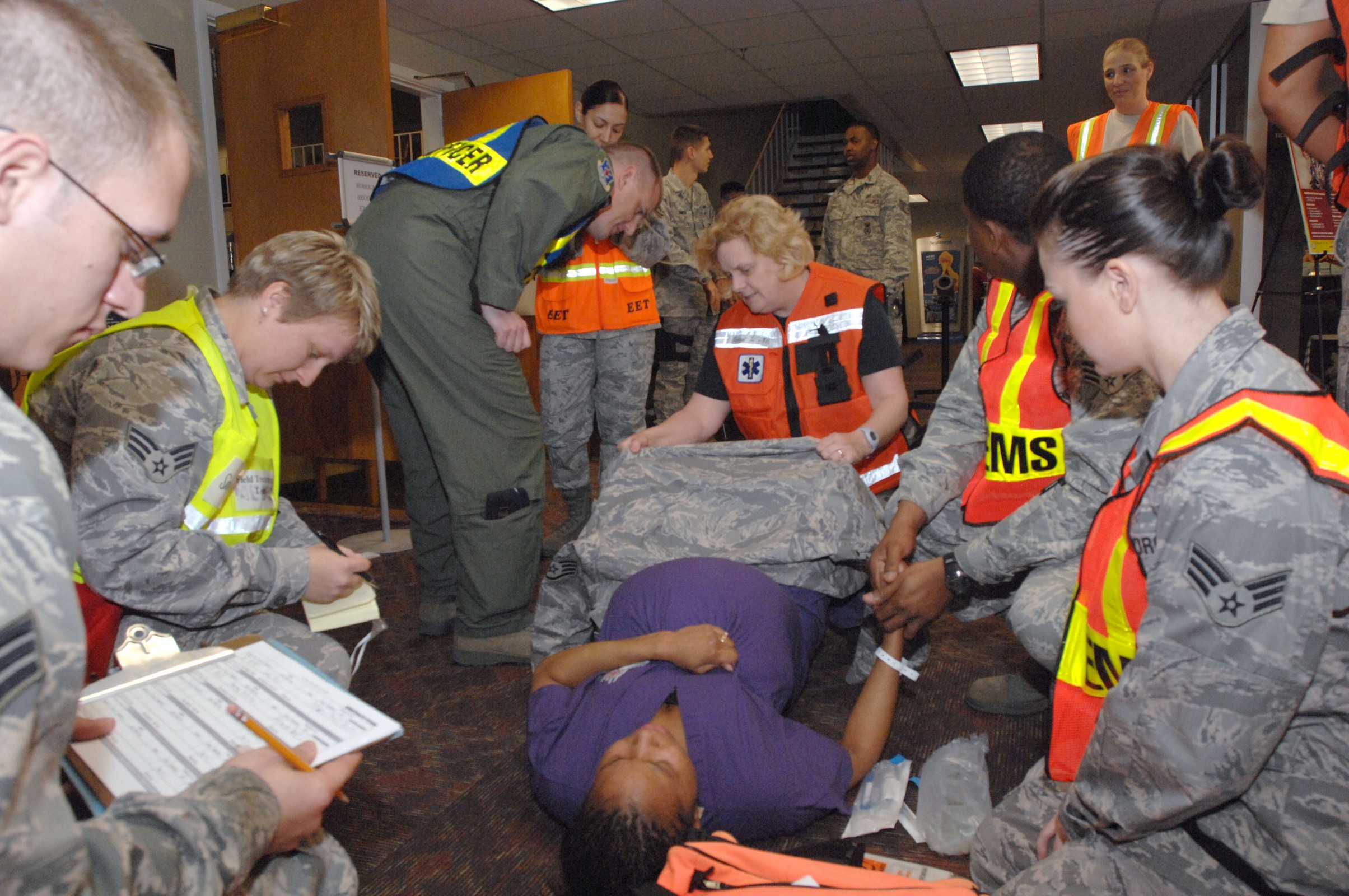FORT SAM HOUSTON, Texas -- A recent three-day exercise tested the responses of the three military installations that make up Joint Base San Antonio in the event of several scenarios involving mass casualties.
Held from Feb. 28 through March 2, the Disaster Response Forces for Fort Sam Houston, Lackland and Randolph Air Force Bases - which includes first responders, crisis action teams, mission partner teams, emergency operation centers, unit control centers and emergency responders - were put through their paces.
"The scenarios that were played out included severe weather, natural disasters and reception of Department of Defense personnel evacuating the Texas coast," said Henry King, chief of the 502nd Air Base Wing exercise evaluation team. "The scenarios also included Federal Emergency Management Agency search and rescue assets coming to Joint Base San Antonio."
The JBSA units were required to use the Air Force Incident Management System and utilize wing plans and checklists in their responses.
"The disaster response force at Lackland AFB received evacuees from the Gulf Coast and responded to damages from the storm," King said. "Randolph AFB and Fort Sam Houston received the FEMA Search and Rescue assets.
"In addition, personnel at Randolph AFB and Fort Sam Houston took shelter from tornadoes and responded to damages around the installation, which included taking care of simulated injuries and deaths," King added.
Dozens of special instructions, or SPINS, were also carried out, King said.
In some cases, these were used to track specific responses of individual units or to demonstrate the flow of information through the system, such as notifying and reviewing action taken at child development centers, base schools and at youth centers.
Other units were tested on how well they were able to prepare and execute casualty notifications, give casualty briefings and notify next of kin.
Public affairs units were also tested on how well they executed their roles in setting up a media operations center, a Straight Talk hotline and in providing media escorts and PA personnel to the scenes of the disasters.
Security forces personnel were tasked to sustain traffic control points, entry control points and post cordon guards at different locations, as well as diverting traffic.
According to the overall plan, emergency medical services were tested on their ability track status and disposition of people injured in the simulated disaster, both on base and after they were relocated to civilian medical facilities.
The chief of the exercise evaluation team said the emergency responders did a good job.
"However, as with almost every exercise, there is room for improvement," King said. "Communications and notifications procedures are two areas where we will put more emphasis in the future. We plan on having some level of exercise occur just about every month."


Social Sharing